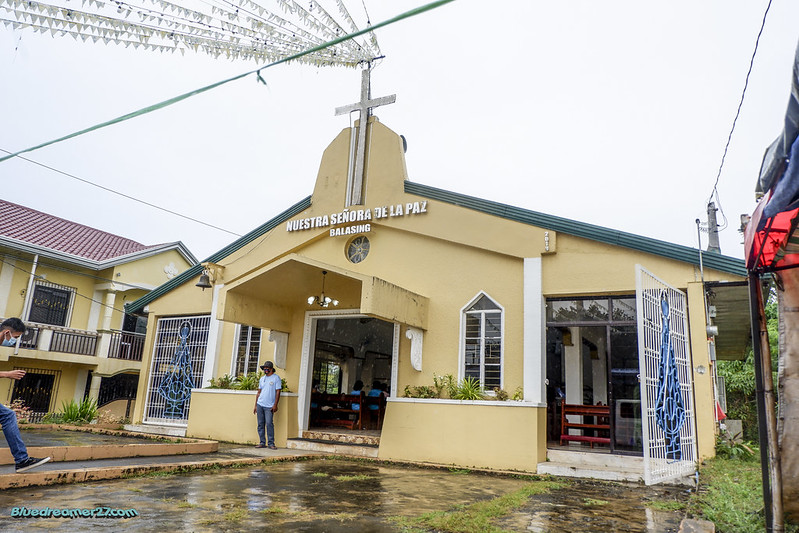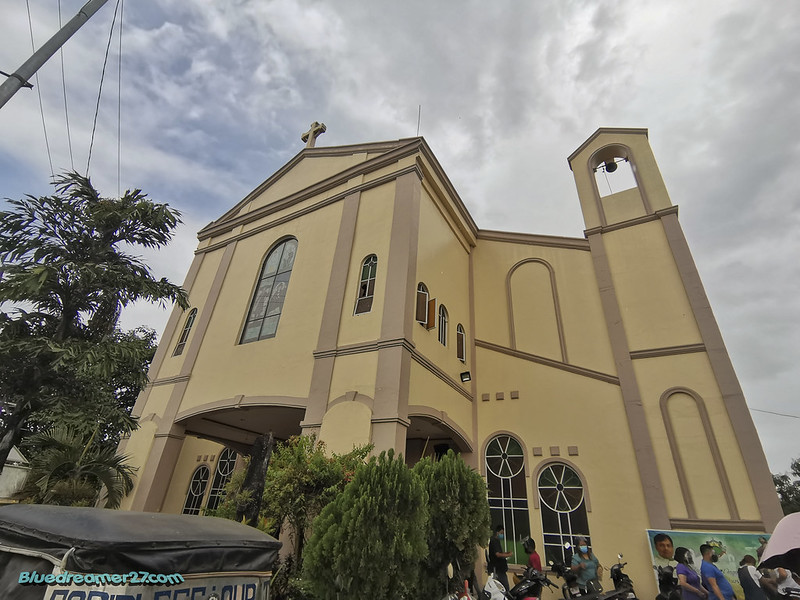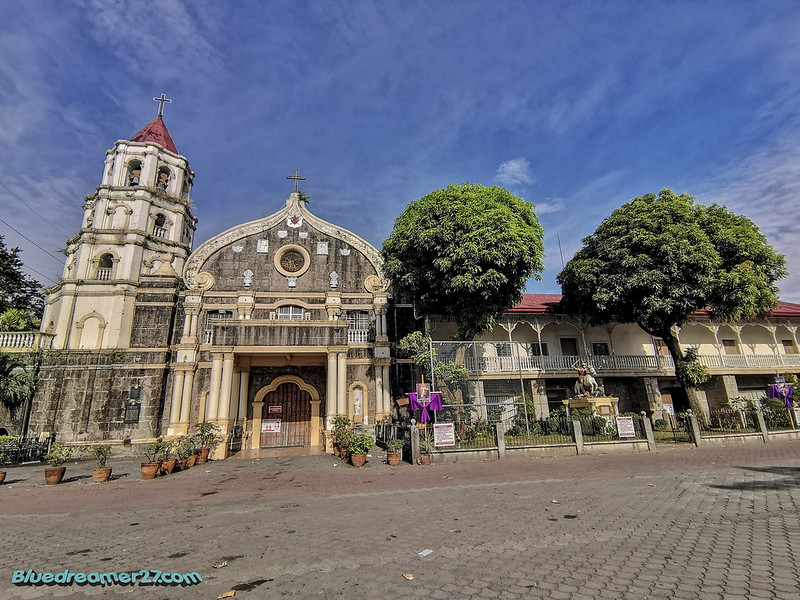A Pilgrimage in Bulacan
Before the second lockdown was implemented in Manila and other nearby provinces (the NCR Bubble), we were lucky enough to visit Bulacan for a pilgrimage. Even before the pandemic, I was really eager to visit this province and personally witness their beautiful and historic churches.
The province of Bulacan comes with a very rich history. It is officially dubbed as the “Land of Heroes” because many prominent national heroes and political figures were born here. Not to mention being the birthplace of the First Constitutional Democracy in Asia. Bulacan is not just one of the oldest provinces in the country but also among the first provinces to be Christianized. It is not really surprising that some of the oldest and most beautiful churches can be found in Bulacan. The province is also known for its excellent craftsmanship which reflects well with their churches.
There’s a great number of churches in Bulacan to visit for Visita Iglesia but unfortunately, a day was not enough for us to explore them all. We were able to visit eight churches, a chapel, and a shrine during our visit. Allow me to give you an overview of our pilgrimage in Bulacan. I want to note that we do not have a concrete itinerary for this trip. We just made some research a few days before the pilgrimage and we had no idea where to start. Luckily, the driver was quite familiar with the province so we just gave him the list of churches we preferred to visit.
Visita Iglesia is one of the traditional religious activities done by Filipinos every Lent season especially during the Holy Week. It is basically a Spanish term that literally means “to visit church”, a Roman Catholic Lenten tradition where Catholics are encouraged to visit at least seven churches and recite the fourteen stations of the cross.

Nuestra Señora De La Paz Chapel
Balasing, Santa Maria, Bulacan
We started our pilgrimage by visiting a small chapel in Balasing, Santa Maria, Bulacan. It was actually not part of our original itinerary but it just so happened that we came across this small chapel in Balasing while heading to Norzagaray. We just offered a small prayer so we can start and conclude this pilgrimage safe and sound. Luckily, this small barangay is also celebrating their feast day when we get there. We were warmly welcomed by their parishioners and we also get to see the chapel’s replica image of Nuestra Señora de la Paz.

Saint Joseph the Worker Church
San Jose Del Monte, Bulacan
We had our first two stations of the cross at Saint Joseph the Worker Parish in San Jose Del Monte, Bulacan. It is considered to be one of the oldest churches in Bulacan. The church was established in 1854. It welcomes you with a simple yet seemingly well-preserved façade with a three-story belfry and a huge bas relief that depicts the image of Saint Joseph, Mary, and the Holy Child Jesus. It also welcomes you with an equally stunning interior. We also get a chance to see the pilgrim image of the Blessed Carlo Acutis and his relic in this parish during our visit.

San Isidro Labrador Parish
San Jose Del Monte, Bulacan
Although not really part of our original itinerary, we saw this parish along the road. The parish is dedicated under the patronage of San Isidro and unlike Saint Joseph The Worker Parish, this one is relatively new. It was founded in 1998. Unfortunately, in observance with the current pandemic, visita iglesia was not allowed when we get there. We didn’t get a chance to explore its interior but it comes with a stunning altar with a beautiful image of Our Lady of La Salette, their second patron. You can also spot a huge statue of San Isidro Labrador outside the church.

Nuestro Señor Jesucristo Parish/ Diocesan Shrine of Saint Andrew Kim Taegon
Lolomboy, Bocaue, Bulacan
From San Jose Del Monte, our team headed next to the recently elevated Diocesan shrine in Lolomboy, Bocaue, Bulacan. I was able to visit the famous Saint Andrew Kim Taegon Shrine few years ago but I wasn’t able to visit the Nuestra Señor Jesucristo Parish. Just like San Isidro Labrador, the Nuestro Señor Jesucristo Parish was relatively new. It was a result of the so-called Project Pangarap that was aimed to build a larger church near the Saint Andrew Kim Taegon Shrine. The construction of the church took several years until it was completed in 2017. Interestingly, the parish was elevated as the Diocesan Shrine of St. Andrew Kim Tae-gon early this year (January 2021).

Saint Andrew Kim Tae-gon Shrine
Of course, a visit to Nuestro Senor Jesucristo Parish will not be completed without visiting the shrine itself. Just few walks away from the parish, you can access this beautiful shrine and now a retreat house dedicated to Saint Andrew Kim Tae-gon, the very first Korean saint. A lot of improvements were made since my last visit. The ground floor, for instance, was now transformed into a museum that tells the life and death of Saint Andrew Kim Tae-Gon. We were also warmly welcomed by Sis Roselle Peralta and walk us through the entire exhibit. You can check my previous visit in Saint Andrew Kim Tae-gon Shrine here.

Our Lady of Mount Carmel Parish / Barasoain Church
Malolos, Bulacan
One of the things in my bucket list was to visit the historical Barasoain Church and finally, I was able to put a check on it during our pilgrimage. Dedicated under the patronage of Our Lady of Mount Carmel, the church was founded in 1888. The church has a huge historical significance in the country and earned the title as the “Cradle of Democracy in the East, the most important religious building in the Philippines”. Adjacent to the church was an old convent and was considered to be the site of the First Philippine Republic.

Minor Basilica of Our Lady of Immaculate Conception / Malolos Cathedral
Malolos, Bulacan
Not too far from the Barasoain Church is the Minor Basilica of Our Lady of Immaculate Conception or better known as the Malolos Cathedral. The church was found in 1580 which makes it one of the oldest churches in Bulacan. The construction of the present church, however, was started in 1814 and completely finished in 1817 under Fray. Melchor Fernández. Like the Barasoain Church, the Malolos Cathedral has a very rich history. The convent adjacent to it served as the presidential palace of Emilio Aguinaldo, during the First Philippine Republic from September 15, 1898 to March 31, 1899. Aguinaldo used the convent as his office. It was elevated into a Cathedral in 1962 and into a Minor Basilica in 1999.

Santiago Apostol Church
Plaridel, Bulacan
After the two parishes in Malolos, we headed to Plaridel to visit another historical church. The church was dedicated under the patronage of Santiago Apostol or Saint James the Great. Plaridel, previously known as Quingua, already existed prior to 1599 when it was annexed to Malolos. The church was founded in 1602 and probably notable for its unique facade. The present stone and brick church is barn-style Baroque mixed with Moorish ornamentation. The interior of the church was equally stunning with beautifully decorated ceiling adorned with tremp d’oeil-inspired paintings.

Saint Augustine Parish
Baliuag, Bulacan
I was able to visit this church few years ago. Saint Augustine Parish or more popularly known as the Baliuag Church was established by the Augustinians in 1733 under the patronage of Saint Augustine of Hippo. Baliuag Church’s architectural style is Baroque as evidenced by the facade and interiors. The facade comes with a huge bas relief of Moses. Outside the church is an altar dedicated to the Immaculate Concepcion known as the “Birhen sa Patio”. The episcopal coronation of La Purisima Concepción de Baliuag took place early this year.

Santo Niño Parish
Bustos, Bulacan
We concluded our pilgrimage in Bustos, Bulacan. The parish is dedicated under the patronage of Santo Niño. The reason behind its patronage is accompanied by a sad and tragic history. A tragic incident occurred in 1860 where a group of natives from Bustos with babies in their arms were on their way to St. Augustine Parish Church of Baliuag for baptismal when they were drowned after the raft they were riding accidentally capsized while crossing the wild river of Angat. This fateful event led the people of Bustos to request and build their own parish church to avoid the crossings in the wild river for community safety. The locals chose Holy Child Jesus (Santo Niño) as their patron saint in honor of those infants that died in the river.
This will be the first part of my Bulacan Pilgrimage series. We will dig into each of this church soon.
This post is part of my Bulacan Pilgrimage series. Feel free to visit my previous entries
- A Pilgrimage to Bulacan
- Saint Joseph the Worker Parish in San Jose Del Monte, Bulacan
- San Isidro Labrador Parish in Muzon, San Jose Del Monte Bulacan
- Nuestro Señor Jesucristo Parish / Diocesan Shrine of Saint Andrew Kim Taegon
- Saint Andrew Kim Taegon Shrine Museum
- Barasoain Church / Our Lady of Mount Carmel Parish in Malolos
- Museo ng Republika ng 1899
- Minor Basilica and Cathedral of Immaculate Conception/ Malolos Cathedral
- Santiago Apostol Church in Plaridel, Bulacan
- Saint Augustine Parish/ Birhen sa Patio in Baliuag, Bulacan
- Santo Niño de Bustos Parish in Bustos, Bulacan
If you have time, don’t forget to follow me on my social media pages
Facebook Page : It’s Me Bluedreamer
Instagram: @bluedreamer1227
YouTube Channel: Milton Coyne



Pingback: Saint Joseph The Worker Parish of San Jose Del Monte, Bulacan - It's Me Bluedreamer!
Pingback: San Isidro Labrador Parish in Muzon, San Jose Del Monte, Bulacan - It's Me Bluedreamer!
Pingback: Nuestro Señor Jesucristo Parish / Diocesan Shrine of Saint Andrew Kim Taegon in Lolomboy, Bocaue, Bulacan - It's Me Bluedreamer!
Pingback: Saint Andrew Kim Taegon Shrine Museum in Lolomboy, Bocaue, Bulacan - It's Me Bluedreamer!
Pingback: The Historic Barasoain Church of Malolos / Our Lady of Mount Carmel Parish - It's Me Bluedreamer!
Pingback: MALOLOS BULACAN ITINERARY: 13 Exciting Things To Do
Pingback: The Minor Basilica and Cathedral of the Immaculate Conception of Malolos / Malolos Cathedral - It's Me Bluedreamer!
Pingback: Santiago Apostol Parish in Plaridel Bulacan / Plaridel Church/ Quingua Church - It's Me Bluedreamer!
Pingback: A Pilgrimage to Laguna 2022: A Visit to 14 Beautiful Churches of Laguna - It's Me Bluedreamer!
Pingback: Saint Augustine Parish and the Birhen sa Patio of Baliuag, Bulacan - It's Me Bluedreamer!
Pingback: Let's Explore Museo ng Republika ng 1899 (Barasoain Museum) - It's Me Bluedreamer!
Pingback: Santo Niño de Bustos Parish in Bustos, Bulacan - It's Me Bluedreamer!
Pingback: San Pascual Baylon Parish / National Shrine of Our Lady of Salambao / Obando Church - It's Me Bluedreamer!